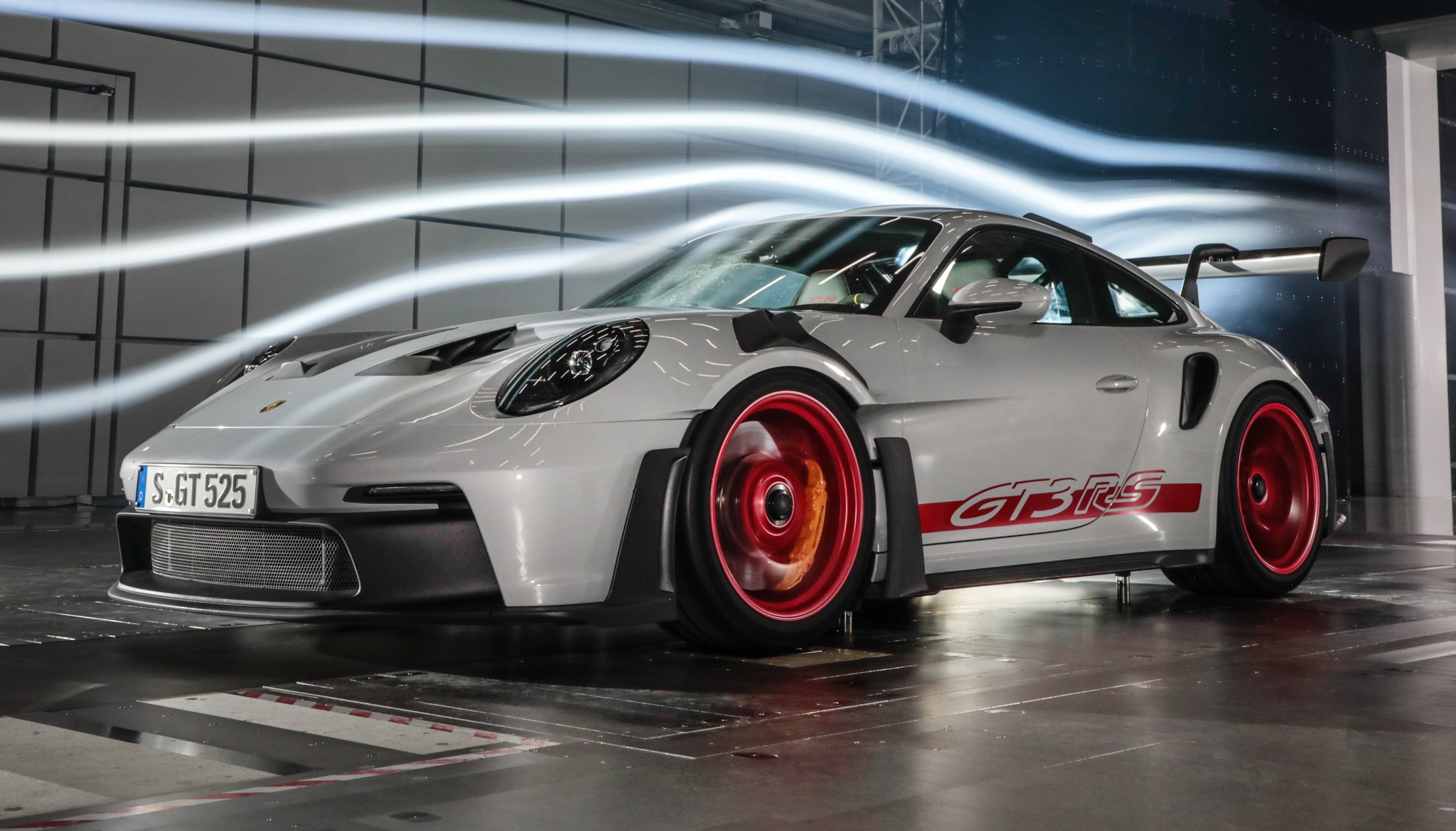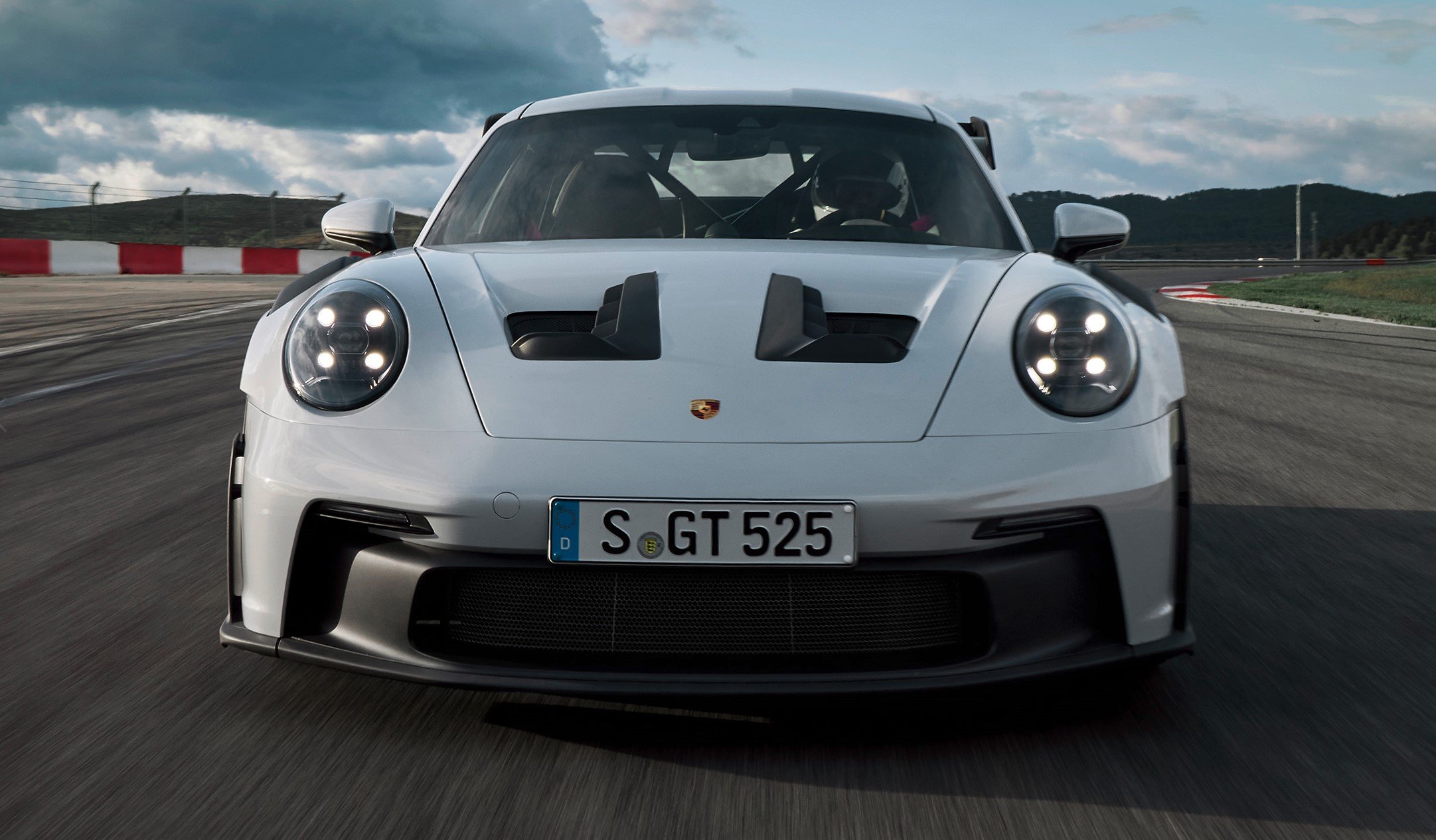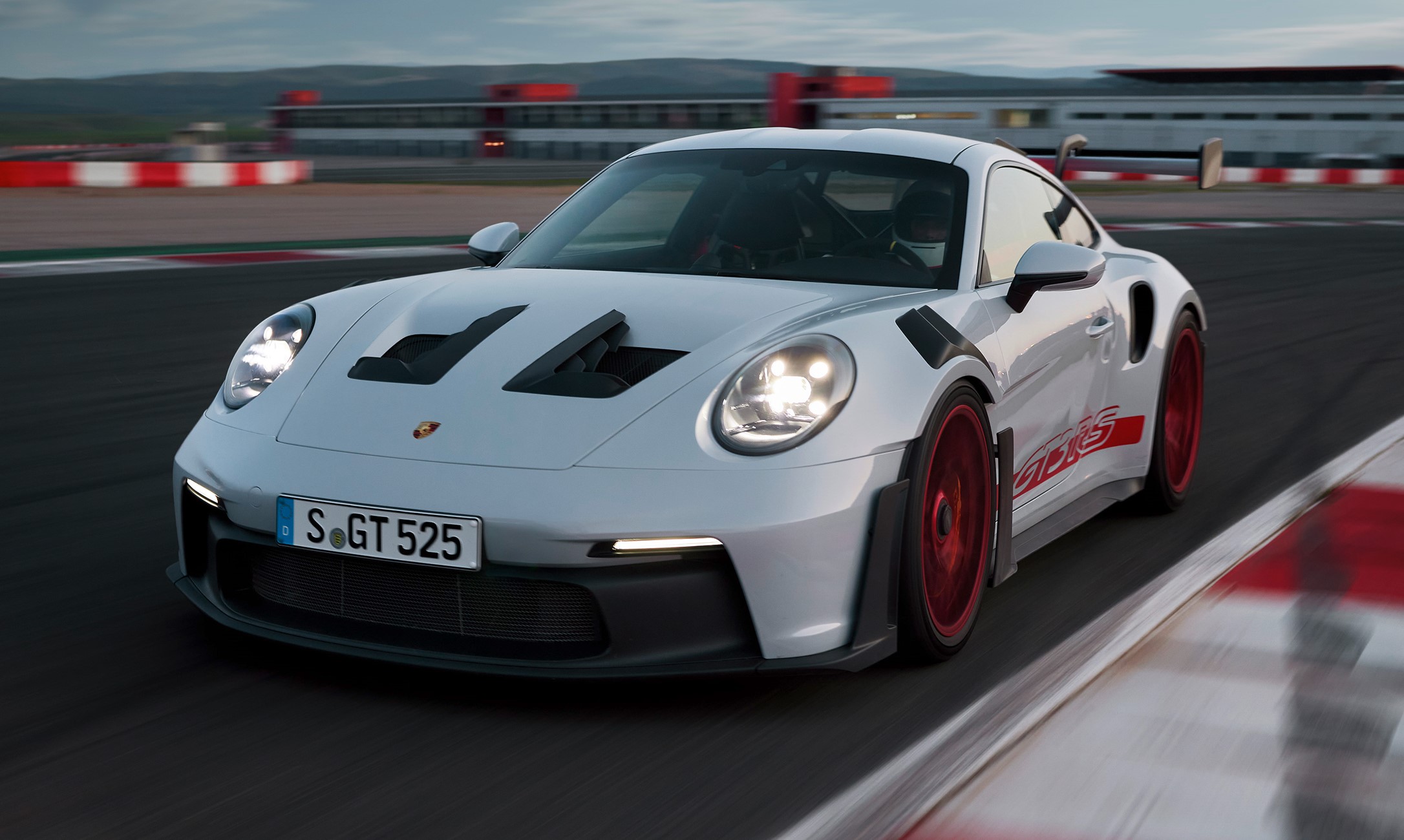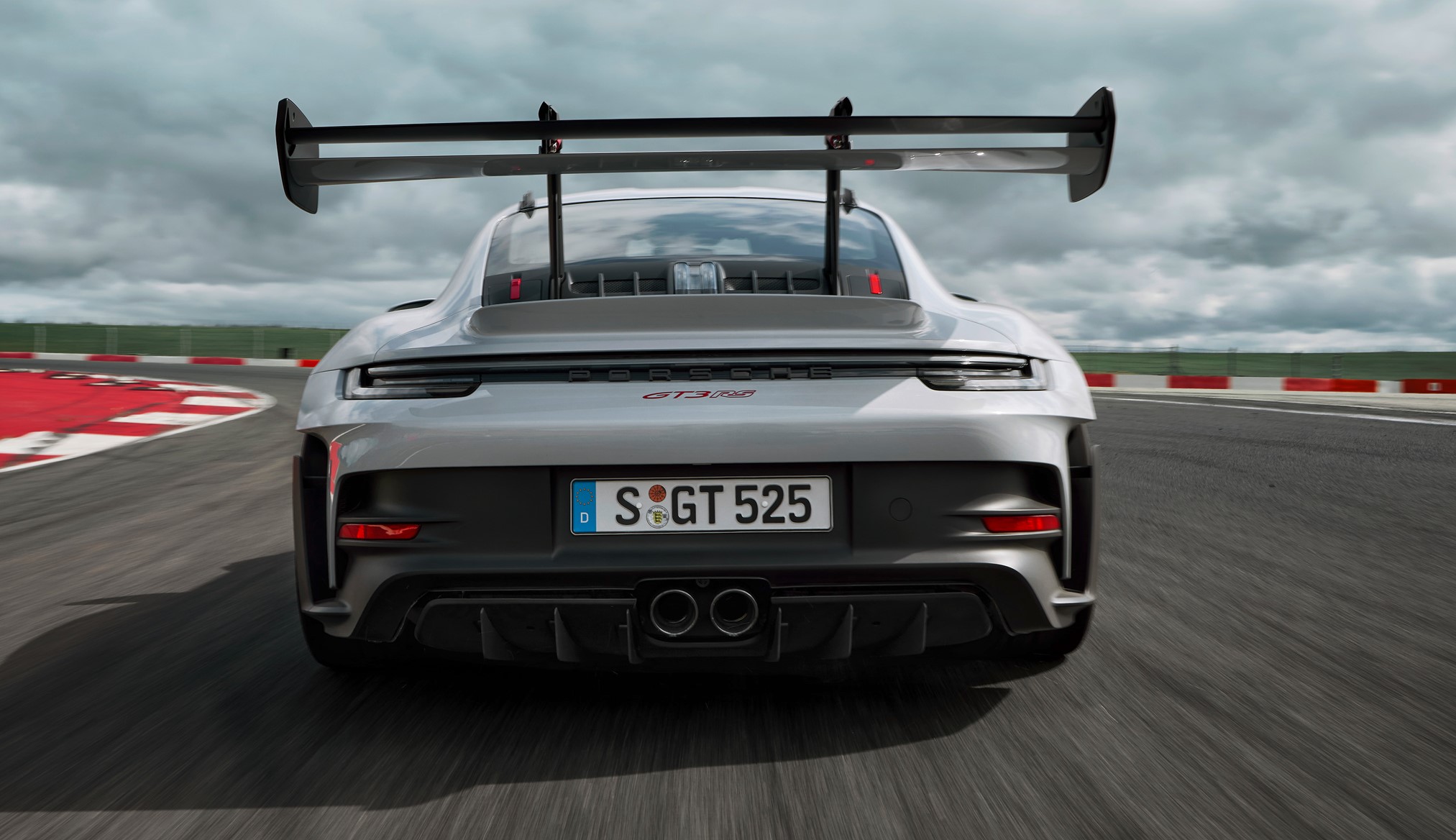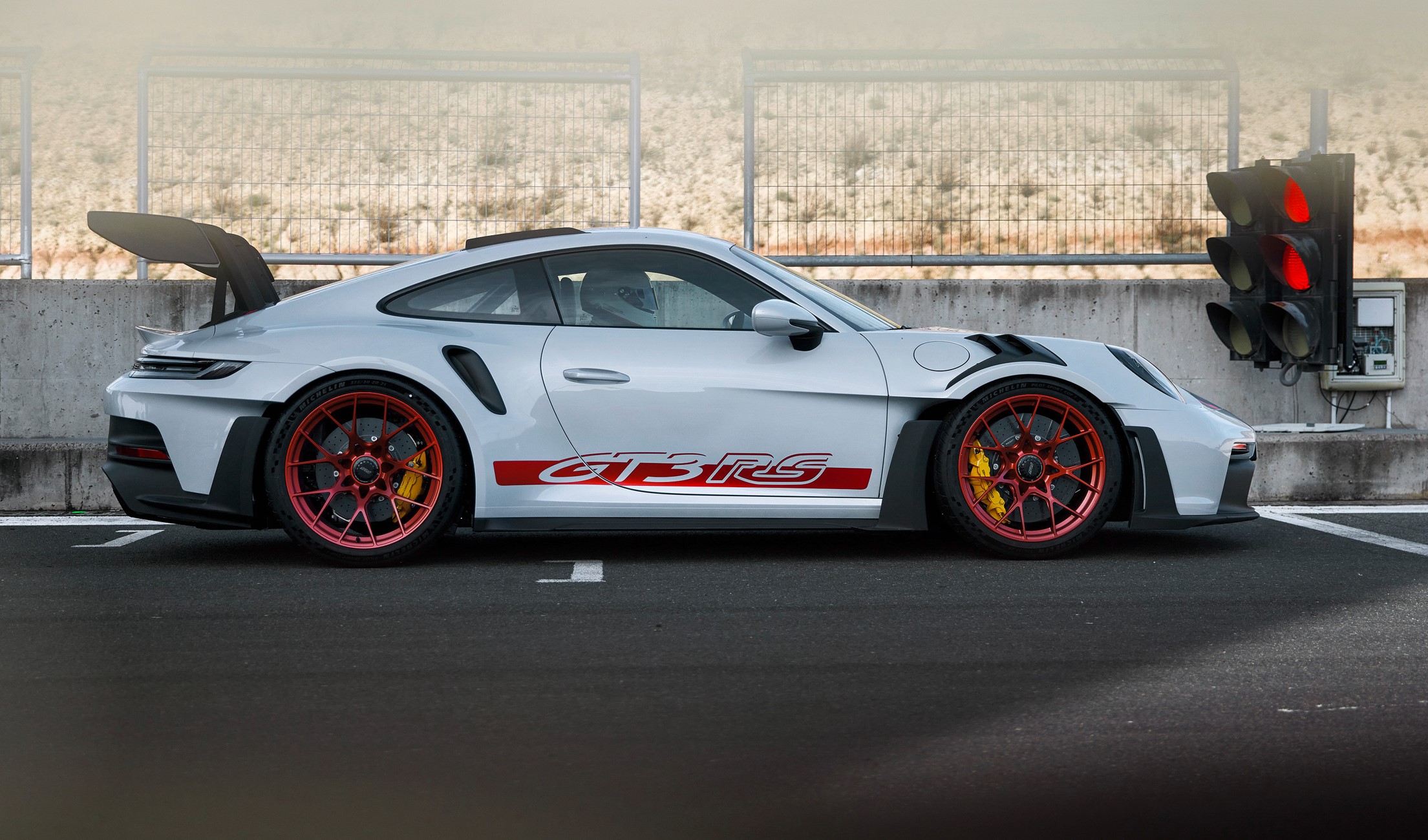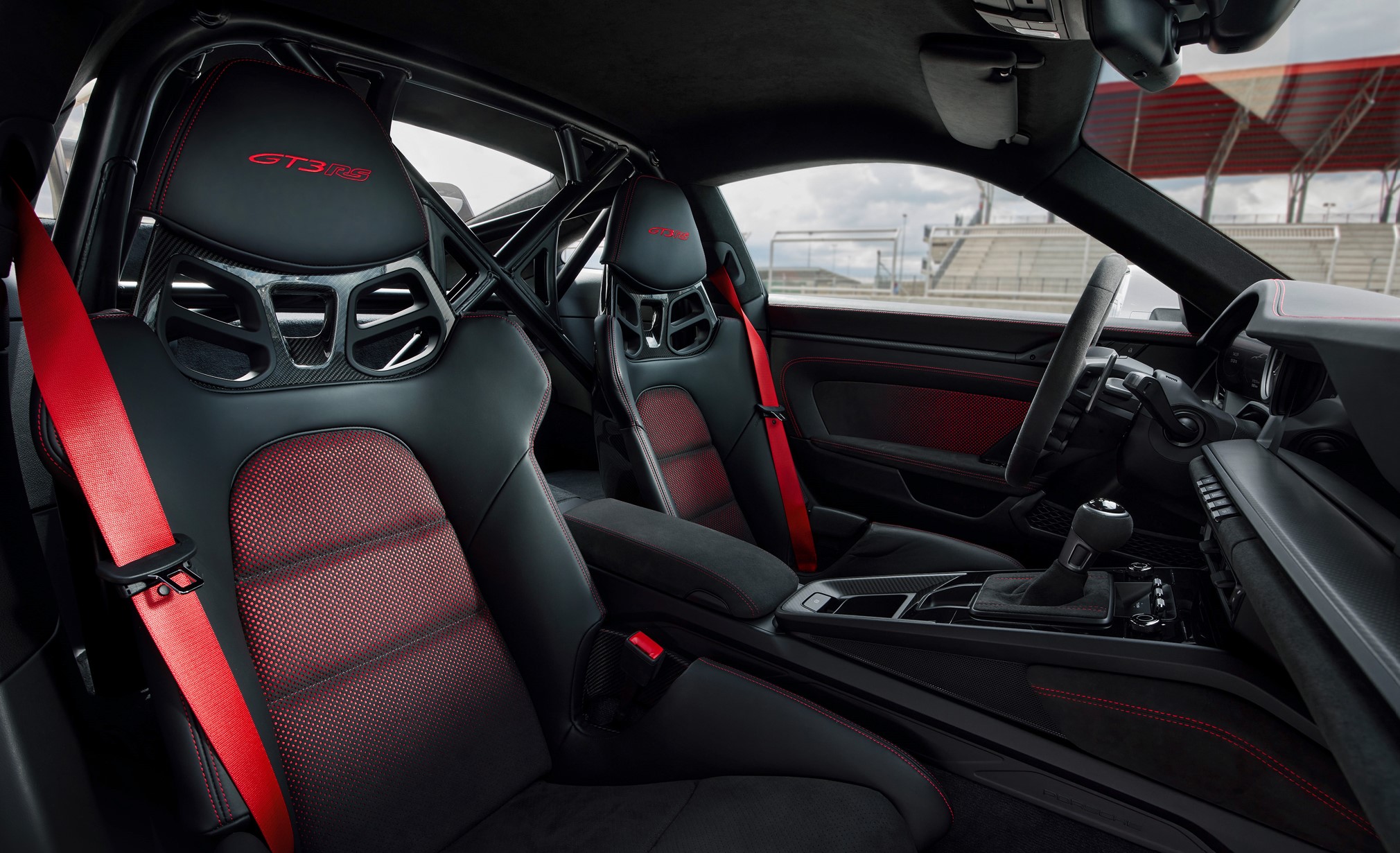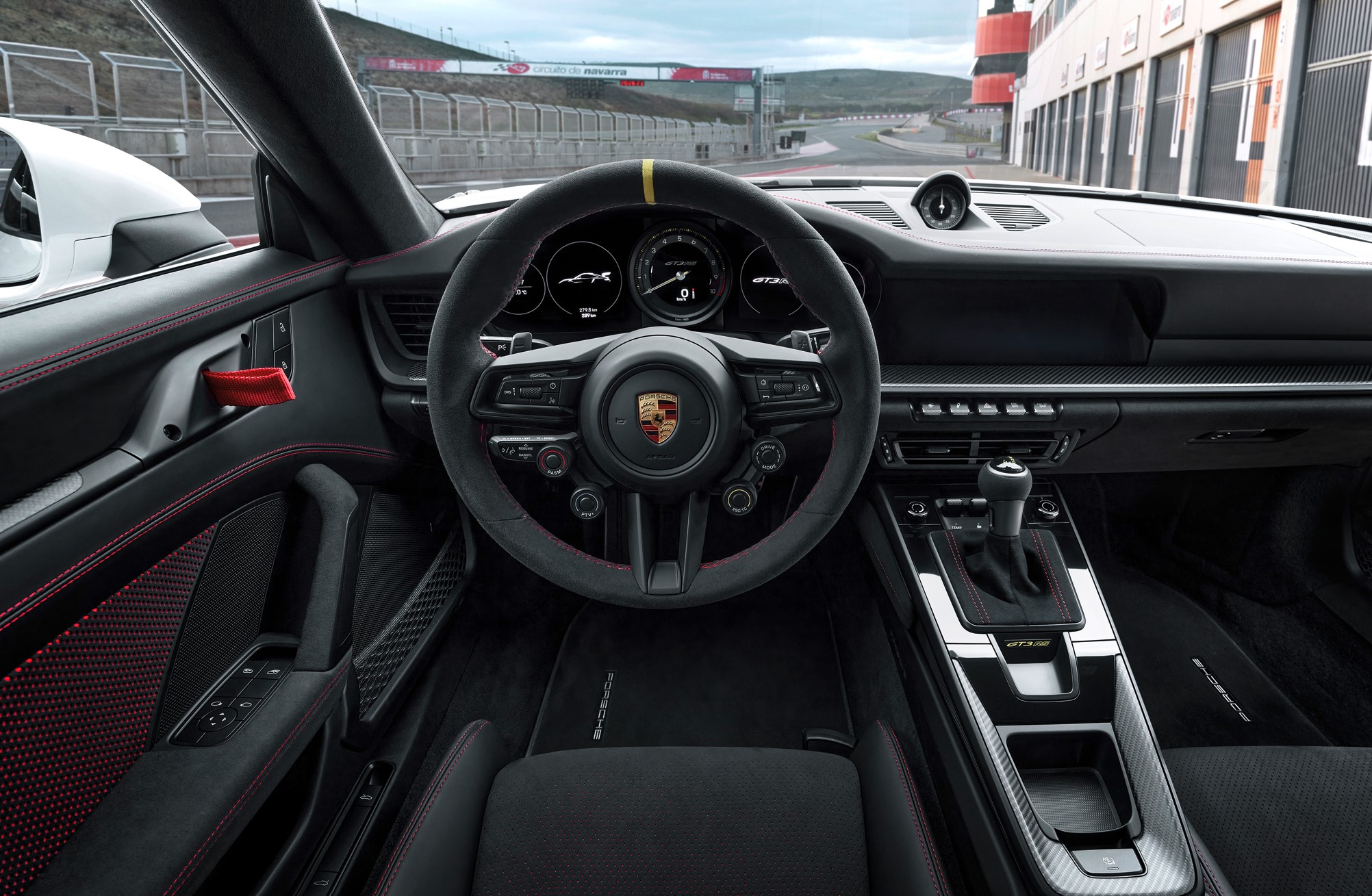The seventh model in the Porsche 911 GT3 RS lineage arrives with wild aero (including DRS) and a $500,200 sticker in Australia – and now we can hear its glorious straight-six soundtrack.
The arrival of an RS Porsche 911 is like Christmas Day for car enthusiasts, and it feels like the anticipation for the new 992 variant has been building for years. Finally, after a flood of spy shots and dribbles of unconfirmed rumours – and some embargo-busting images – the 992 GT3 RS is here. And finally, Porsche has released a video its newest racer screaming around the race track (below).
Including the unicorn-rare 997.2 GT3 RS 4.0, the new 992 variant is just the seventh GT3 RS to launch since the lineage started in 2003 with the 996.2 model. In fact, it’s that model’s red wheels and decals over white paint that is mimicked here with the latest RS.
It’ll come in due course, but the missing headline figure is a Nurburgring Nordscheilfe lap time, but it’ll be comfortably under seven minutes and could go close to being a full minute faster than the 7:43 set by the 996 GT3 RS nearly 20 years ago.
Some other figures to get out of the way early include the 386kW power figure and the $500,200 price when the GT3 RS arrives in Australia in the second quarter of next year. For those who know their 911s, you’ll have spotted that the power figure is up just 3kW on the 991.2 GT3 RS, while the price has jumped $83,700 from when that model first went on sale in 2018.
While internet rumours suggested a move to a 4.2-litre capacity, the 992 GT3 RS retains the 3996cc flat-six used in the previous-generation model and the current GT3. However, it’s not a straight carry-over as the engine features new camshafts with modified cam profiles.
Kerb weight has crept up 30kg to 1450kg, which remains impressive given that the 992 is a bigger car than the 991, and that the new car boasts additional hardware. Still, when factored against the modest power increase, the new car has a very slightly inferior power-to-weight ratio of 266kW/tonne compared to 268kW/tonne for the previous-gen model. The new car claims an identical 0-100km/h time of 3.2 seconds, but the 296km/h top speed (down 15km/h on the previous car) hints at the shorter overall gearing employed by Porsche. One assumes better acceleration from 100-200km/h – the type that is common on a track.
And the track is where the brand’s engineers have focused, with the GT3 RS boasting the most advanced aerodynamics ever featured on a Porsche production car. In a first for the brand, the new RS features a drag reduction system (DRS) that flattens the active element of the rear wing at the push of a button on the steering wheel. And while it’s impossible to ignore that rear wing, the aero story begins at the nose of the RS.
The new car features a single, large radiator in the nose instead of the trio of radiators previously used. The single, angled radiator has been proven in motorsport with the 911 RSR and GT3 R, and its use frees up space either side for active aero elements. After air has passed through the radiator, it is expelled out of large nostril vents in the front lid and directed outwards by fins on the roof, ensuring cooler intake temperatures for the rear-mounted flat six.
The rear wing might dominate your first impression, but we believe that the scalloped vents behind the front wheels and into the doors are the new car’s design signature. Drawing inspiration from the Le Mans-winning GT1, these vents work in tandem with the louvred vents in the front guards to reduce wheel-arch pressure. Side blades channel the air along the side of the car to minimise turbulence. The rear wheel arch also features an indented vent aft of the wheel and a side blade to again maximise aero performance.
Okay, now we can talk about the rear wing. Following on from the introduction on the 992 GT3, the new RS features a swan-neck wing that, in a brand first, sits higher than the roof line. It’s made up of a main fixed-wing element and the hydraulically adjustable upper element which can be stalled by the DRS button. The upper element also acts as an airbrake during heavy high-speed brake applications.
Leaving no stone unturned for ultimate aerodynamic performance, Porsche has employed motorsport-style teardrop shaped double wishbones on the front suspension that contribute 40kg of downforce at the car’s top speed. At 200km/h, the GT3 RS produces 409kg of balanced downforce and an astonishing 860kg at 285km/h. Porsche says that this is double the previous-gen RS and three times as much as the 992 GT3.
The motorsport focus continues inside where the GT3 RS offers three driving modes: Normal, Sport and Track. Track mode allows you to adjust the compression and rebound damping on each axle separately through various stages. You can also adjust the locking function of the diff via another rotary dial on the steering wheel. In total, the steering wheel features four rotary dials to adjust the damping (PASM), diff (PVT), stability and traction control systems (ESC/TC) and the drive modes. In addition to this, the left spoke of the steering wheel features the button to control the DRS.
Like the engine, the braking system is familiar with the front rotors measuring 408mm, though they are now 36mm thicker (up 2mm). The six-piston aluminium monobloc fixed calipers now use 32mm pistons (again an increase of 2mm). The rear employs 380mm rotors and four-piston fixed calipers. Carbon ceramic rotors are available as an option (410mm front, 390mm rear).
Forged alloys wheels are standard (wrapped in 275/35 R20 front and 335/30 R21 Michelin Pilot Sport Cup 2 or Cup 2R rubber) with magnesium forged wheels available as part of the optional Weissach Package – these save 2kg per corner. The Weissach Package includes the use of carbonfibre for the front lid, roof, elements of the rear wing and the upper casing of the wing mirrors. In a first for Porsche, the Weissach Package also swaps the steel roll cage for one made from carbonfibre – this saves another 6kg. Carbonfibre is also used for the front and rear anti-roll bars, the rear shear panels and the rear coupling rods.
The Weissach Package also brings another first with the PDK shift paddles fitted with motorsport-derived magnet technology that provides a more precise pressure point.
Australian-spec cars will come as standard with front-axle lift, Park Assist (rear), reversing camera, tinted LED main headlights with Porsche Dynamic Light System and digital radio.
Cynics will gravitate towards the modest power increase and substantial price increase, but we suspect those elements will be subsumed by the enormous advances in aerodynamic performance and chassis adjustability. Just as all previous GT3 RS models have, this new 992 variant pushes the envelope of road-legal performance ever closer to the smooth tarmac of a circuit.




